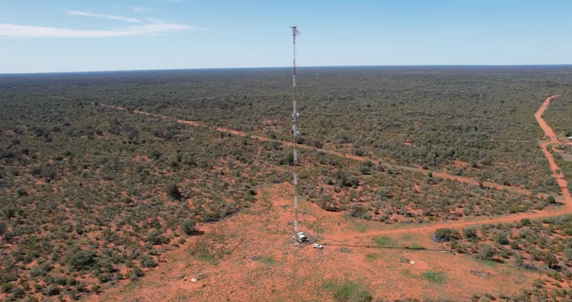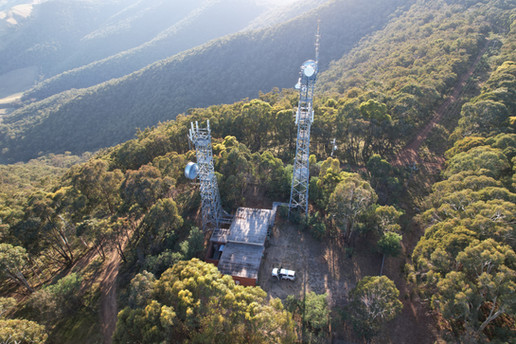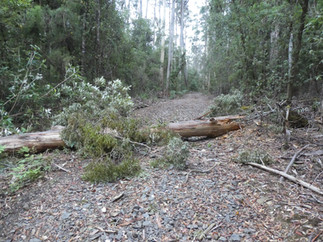
Prioritising Safety in Every Site Visit:
In the ever-evolving world of telecommunications and technology, reliable infrastructure is the backbone of connectivity across our vast nation. As a leading provider of telecom and technology services in Australia, we've spent decades honing our expertise in surveying, inspecting, designing and delivering large scale Network projects. Our team has conducted thousands of site visits nationwide, leveraging cutting-edge drones for aerial imaging and data collection, alongside AI-driven analytics through proprietary software platform. This allows us to deliver precise condition reports, equipment audits and engineering-accurate measurements—all while minimising on-site risks.
But behind every successful project lies a story of journey: the arduous travels to remote, rural, and outback locations that define Australia's communications landscape. From the dusty red plains of the Simpson Desert to the rugged peaks of the Great Dividing Range, accessing these sites is no small feat. In this article, we'll explore the challenges of traversing one of the world's most extreme environments, and how our unwavering commitment to health and safety ensures we deliver exceptional results for our clients, every time.
The Unique Challenges of Australia's Remote Sites:
Australia's sheer size and diverse geography make it a continent like no other. Spanning over 7.6 million square kilometres, our country features everything from dense rainforests in Queensland to snow-capped mountains in the Australian Alps, and endless stretches of arid desert in the interior. Telecom infrastructure—essential for keeping communities connected—often sits in the most inaccessible spots: atop isolated hills, in deep valleys, or along coastal cliffs battered by ocean winds.
Travelling to these sites means navigating a web of dirt tracks, unsealed roads, and narrow mountain paths that can turn treacherous with a single rainstorm. In the outback, routes like the Gibb River Road in Western Australia or the Birdsville Track in South Australia are infamous for their isolation, where help might be hundreds of kilometres away. Seasonal factors add another layer of complexity; many access roads in the Top End become impassable during the wet season due to flooding, while southern alpine tracks may be snowbound in winter. Extreme weather events—bushfires, cyclones, or flash floods—can strike without warning, blocking paths and forcing detours that extend trips from days to weeks.
And then there are the inherent dangers of remote work in Australia. Wildlife encounters are a constant reality: venomous snakes, spiders, and even crocodiles in northern regions pose risks during ground surveys. Heat exhaustion in the scorching outback summers, where temperatures soar above 45°C, or hypothermia in high-altitude forests during winter, demand vigilant preparation. Driving fatigue on long, monotonous hauls is another silent threat, compounded by the lack of services like fuel stations or medical facilities.
These challenges aren't just logistical—they're a testament to the resilience required in our industry. Yet, it's precisely this experience, built over decades, that positions us as Australia's most seasoned telecom site specialists.
Safety First: Our Rigorous Approach to Every Journey
At the heart of our operations is an unyielding dedication to health and safety—for our team, our clients' assets, and the fragile environments we traverse. We don't just comply with industry standards; we exceed them, treating every site visit as a mission where zero incidents is the only acceptable outcome. This philosophy has been forged through thousands of successful expeditions, allowing us to build trust as a reliable partner for telecom upgrades, maintenance, and infrastructure design.
Preparation begins long before wheels hit the road. Our teams undergo comprehensive training in remote area survival, first aid, and hazard identification, tailored to Australia's unique threats. Vehicles are equipped with satellite communications, GPS tracking, emergency beacons, and recovery gear to handle breakdowns or strandings. We conduct thorough risk assessments for each trip, factoring in real-time weather forecasts, road conditions, and environmental sensitivities—such as avoiding sensitive Indigenous lands or protected wildlife habitats.
Technology plays a pivotal role in enhancing safety. Our drones allow us to perform initial aerial surveys without exposing personnel to unnecessary ground risks, capturing high-resolution images and data for AI analysis back at base. This not only reduces time on-site but also identifies potential hazards like structural weaknesses or unstable terrain from afar. The data analytics platform processes this information to generate detailed reports, ensuring that when boots do hit the ground, it's with a clear plan and minimal exposure.
Environmental stewardship is equally paramount. We adhere to strict leave-no-trace principles, minimising our footprint in pristine areas. This includes using low-emission vehicles where possible, proper waste management, and collaborating with local communities to respect cultural and ecological sites. By integrating AI tools, we optimise routes to reduce fuel consumption and emissions, contributing to a sustainable future for Australia's telecom networks.
We've certainly faced our share of challenging situations over the years, but through meticulous planning and a culture of safety-first decision-making, we've always emerged stronger, with lessons that refine our processes further.

For more information or questions regarding our services use the Contact page.
All images, videos & music by © OptemAI



























